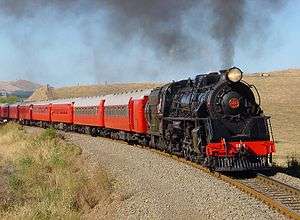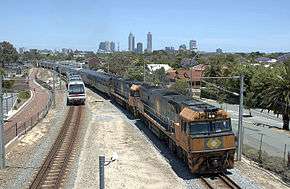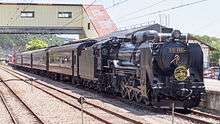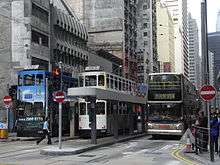3 ft 6 in gauge railways
| By transport mode | ||||||||||||||||||||||||||||||||||||||||||||||||||||||||||||||||||||||||||||||||||||||||
|---|---|---|---|---|---|---|---|---|---|---|---|---|---|---|---|---|---|---|---|---|---|---|---|---|---|---|---|---|---|---|---|---|---|---|---|---|---|---|---|---|---|---|---|---|---|---|---|---|---|---|---|---|---|---|---|---|---|---|---|---|---|---|---|---|---|---|---|---|---|---|---|---|---|---|---|---|---|---|---|---|---|---|---|---|---|---|---|---|
| Tram · Rapid transit Miniature · Scale model | ||||||||||||||||||||||||||||||||||||||||||||||||||||||||||||||||||||||||||||||||||||||||
| By size (list) | ||||||||||||||||||||||||||||||||||||||||||||||||||||||||||||||||||||||||||||||||||||||||
| ||||||||||||||||||||||||||||||||||||||||||||||||||||||||||||||||||||||||||||||||||||||||
| Change of gauge | ||||||||||||||||||||||||||||||||||||||||||||||||||||||||||||||||||||||||||||||||||||||||
| Break-of-gauge · Dual gauge · Conversion (list) · Bogie exchange · Variable gauge | ||||||||||||||||||||||||||||||||||||||||||||||||||||||||||||||||||||||||||||||||||||||||
| By location | ||||||||||||||||||||||||||||||||||||||||||||||||||||||||||||||||||||||||||||||||||||||||
| North America · South America · Europe · Australia | ||||||||||||||||||||||||||||||||||||||||||||||||||||||||||||||||||||||||||||||||||||||||
 | ||||||||||||||||||||||||||||||||||||||||||||||||||||||||||||||||||||||||||||||||||||||||






.jpg)
Railways with a track gauge of 3 ft 6 in/1,067 mm were first constructed as horse-drawn wagonways. From the mid-nineteenth century, vast 3 ft 6 in gauge networks emerged in the British colonies and Japan, but 3 ft 6 in gauge tram networks only started appearing in the 20th century.
There are approximately 112,000 kilometres (70,000 mi) of 1,067 mm gauge track in the world.
History
- 1795
- One of the first railways to use 3 ft 6 in (1,067 mm) gauge was the Little Eaton Gangway in England, constructed as a horse-drawn wagonway in 1795. Other 3 ft 6 in gauge wagonways in England and Wales were also built in the early nineteenth century.
- 1862
- In 1862 the Norwegian engineer Carl Abraham Pihl constructed the first 3 ft 6 in gauge railway in Norway, the Røros Line.
- 1865
- In 1865 the Queensland Railways were constructed. Its 3 ft 6 in gauge was promoted by the Irish engineer Abraham Fitzgibbon and consulting engineer Charles Fox.
- 1868
- In 1868 Charles Fox asks civil engineer Edmund Wragge to survey a 3 ft 6 in railway in Costa Rica.
- 1871
- In 1871 the Canadian Toronto, Grey and Bruce Railway and the Toronto and Nipissing Railway were opened, promoted by Pihl and Fitzgibbon and surveyed by Wragge as an engineer of Fox.
- 1872
- In January 1872 Robert Fairlie advocated the use of 3 ft 6 in gauge in his book Railways Or No Railways: Narrow Gauge, Economy with Efficiency v. Broad Gauge, Costliness with Extravagance.[1]
- 1872 also saw the opening of the first 3 ft 6 in gauge railway in Japan, proposed by the British civil engineer Edmund Morel based on his experience of building railways in New Zealand.[2]
- 1873
- On 1 January 1873, the first 3 ft 6 in gauge railway was opened in New Zealand, constructed by the British firm John Brogden and Sons. Earlier built 4 ft 8 1⁄2 in (1,435 mm) and broad gauge railways were soon converted to the narrower gauge.
- Also in 1873 the Cape Colony adopted the 3 ft 6 in gauge.[3][4] After conducting several studies in southern Europe, the Molteno Government selected the gauge as being the most economically suited for traversing steep mountain ranges.[5] Beginning in 1873, under supervision of Railway engineer of the Colony William Brounger,[6] the Cape Government Railways rapidly expanded and the gauge became the standard for southern Africa.[7][8]
- 1876
- Natal also converted its short 10 kilometres (6.2 miles) long Durban network from 4 ft 8 1⁄2 in (1,435 mm) broad gauge prior to commencing with construction of a network across the entire colony in 1876.[9] Other new railways in Southern Africa, notably Mozambique, Bechuanaland, the Rhodesias, Nyasaland and Angola, were also constructed in 3 ft 6 in gauge during that time.
- After 1876
- In the late nineteenth and early twentieth century numerous 3 ft 6 in gauge tram systems were built in the United Kingdom and the Netherlands.
Nomenclature
In Sweden, the gauge was nicknamed Blekinge gauge, as most of the railways in the province of Blekinge had this gauge.[10]
An alternate name for this gauge, Cape gauge, is named after the Cape Colony in what is now South Africa, which adopted it in 1873.[3] The term Cape Gauge is used in other languages, such as the Dutch kaapspoor, German Kapspur, Norwegian kappspor and French voie cape. After metrication in the 1960s, the gauge was referred to in official South African Railways publications as 1065 mm instead of 1067 mm.[11]
The gauge is sometimes referred to as CAP gauge, after C.A. Pihl.[12]
The gauge name Colonial Gauge was used in New Zealand.[13][14]
In Australia the imperial (pre-metric) term 3 foot 6 inch is used. In some Australian publications the term medium gauge is also used,[15] while in Australian states where 4 ft 8 1⁄2 in (1,435 mm) is the norm, 1,067 mm (3 ft 6 in) gauge is often referred to as narrow gauge.
In Japan 1,067 mm (3 ft 6 in) gauge is referred to as kyōki (狭軌), which directly translates as narrow gauge. It is defined in metric units.
Similar gauges
Similar rail gauges in respect of aspects such as cost of construction, practical minimum radius curves and the maximum physical dimensions of rolling stock are:
- 1,100 mm (3 ft 7 5⁄16 in),
- 1,093 mm (3 ft 7 in),
- 1,055 mm (3 ft 5 1⁄2 in),
- 1,050 mm (3 ft 5 11⁄32 in), and
- 1,000 mm (3 ft 3 3⁄8 in) metre gauge.
Usage
| Country/territory | Notes |
|---|---|
| Angola | Rail transport in Angola, some converted from 2 ft (610 mm) gauge and 1,000 mm (3 ft 3 3⁄8 in) metre gauge. Some isolated. |
| Australia | See also: Rail gauge in Australia. 15,160 km (9,420 mi). New South Wales on the heritage Zig Zag Railway line, Queensland 8,313 km (5,165 mi), South Australia: the isolated Port Lincoln network and Pichi Richi Railway, Tasmania 632 km (393 mi), Western Australia, Northern Territory (closed). |
| Barbados |
Barbados Railway (converted to 2 ft 6 in or 762 mm gauge) (defunct) |
| Botswana | The Botswana Railways system consists of 888 kilometres (552 mi) of 3 ft 6 in (1,067 mm) gauge track. |
| Canada | Western New Brunswick until gauge conversion in the 1880s; the Newfoundland Railway until abandonment in September 1988, and the Prince Edward Island Railway until gauge conversion in 1930 following a car ferry connection with the main North America system, until abandonment in December 1989; see Narrow gauge railways in Canada. |
| China | South Manchuria Railway — built to 1,520 mm (4 ft 11 27⁄32 in) as part of the Chinese Eastern Railway, converted by advancing Japanese troops during the Russo-Japanese War of 1904–1905 to Japanese 1,067 mm (3 ft 6 in) gauge, converted to standard gauge after the war by the new South Manchuria Railway Company.[16] |
| Costa Rica | Operation of the national railway network was suspended in 1995 after an earthquake. As of 2013, some suburban lines are operational. |
| Democratic Republic of the Congo | 3621 km 3 ft 6 in (1,067 mm) gauge (858 km or 533 mi electrified). Some converted from 1,000 mm (3 ft 3 3⁄8 in) and 2 ft 6 in (762 mm) gauge. |
| Ecuador | Empresa de Ferrocarriles Ecuatorianos 965 km (600 mi)[17] |
| Estonia | Tallinn tram 38 km (24 mi) |
| Ghana | The national rail network of 935 km (581 mi) is undergoing major rehabilitation. |
| Haiti | Saint-Marc line (defunct) |
| Honduras | Main article: Rail transport in Honduras |
| Hong Kong | Hong Kong Tramways |
| Indonesia | 5,961 km (3,704 mi).[18] Most common gauge for Indonesian Railways. The first railway was actually built to standard gauge (the Semarang - Solo - Yogyakarta corridor), but later lines were built to Cape Gauge size owing to economic feasibility. The remainder of standard gauge lines were regauged by Japanese army during WWII to 3 ft 6 in (1,067 mm) gauge, with parts using standard gauge sleepers. |
| Ireland | Main article: List of narrow gauge railways in Ireland |
| Isle of Man | Snaefell Mountain Railway |
| Japan | 22,301 km (13,857 mi).[19] First track gauge introduced. All JR Group lines use this gauge except for high-speed shinkansen lines which use standard gauge. |
| Malawi | Malawi Railways has 797 km (495 mi) of 3 ft 6 in (1,067 mm) gauge railways. |
| Mozambique | Mozambique Ports and Railways operates 2,983 km (1,854 mi) of 3 ft 6 in (1,067 mm) gauge. |
| Namibia | TransNamib operates 2,883 km (1,791 mi) of 3 ft 6 in (1,067 mm) gauge, partly converted from 600 mm (1 ft 11 5⁄8 in) gauge. |
| Netherlands | Some tramway systems (all defunct) |
| New Zealand | 3,900 km (2,400 mi), standardized by the Public Works Act 1870[20] |
| Nicaragua | 373 km (232 mi) of track until closure of the national rail network in 1993. All lifted and scrapped. |
| Nigeria | Nigerian Railway Corporation operates an isolated network of 3,505 kilometers (2,178 mi) 3 ft 6 in (1,067 mm) gauge single track lines. |
| Norway | The gauge was first used by C A Pihl on the Hamar-Grundset Line, opened 23 June 1862.[21] The nickname CAP-gauge may be from his initials and not from the use of the gauge in the Cape Province in South Africa. Most lines were 3 ft 6 in (1,067 mm) gauge lines built in the 19th century were rebuilt to standard gauge between 1904 and 1949. The Setesdal Line, a heritage railway line of about eight km remains 3 ft 6 in (1,067 mm) gauge. |
| Panama | Panama Tramways Company (1913–1917) and the Panama Electric Company (1917–1941).[22] |
| Philippines | Philippine National Railways has 1,140 km (710 mi) on Luzon; From 1907-85 the now-Panay Railways had 117 km (73 mi) on Panay and from 1911-41 57 mi (92 km) on Cebu |
| Republic of the Congo | The Congo–Ocean Railway, 502 kilometres (312 mi) long (operating). |
| Russia | Sakhalin Railway – as of 2010 in the process of conversion to 1,520 mm (4 ft 11 27⁄32 in) Russian gauge. |
| Sierra Leone | There are 84 kilometres of 3 ft 6 in (1,067 mm) gauge private railways in Sierra Leone. |
| South Africa | About 20,500 route-km.[23][24] Gautrain (80 km) is 4 ft 8 1⁄2 in (1,435 mm) standard gauge and there were several limited 2 ft (610 mm) narrow gauge systems. |
| South Sudan | Isolated, 248 kilometers (154 mi) |
| Spain | The line from Cartagena to Los Blancos was originally 1,067 mm (3 ft 6 in), but was converted to 1,000 mm (3 ft 3 3⁄8 in) in 1976, at the same time as the line was extended to Los Nietos.[25] |
| Sudan | Isolated, 4,725 kilometers (2,936 mi) |
| Swaziland | 301 kilometres (187 mi), only for transportation of goods, not passengers |
| Sweden | Several during the 19th century, all closed or regauged. |
| Taiwan | 1,097 km (682 mi) (Taiwan Railways Administration) |
| Tanzania | Dar es Salaam to Zambia (TAZARA Railway only, rest of the network is 1,000 mm (3 ft 3 3⁄8 in) metre gauge. |
| Turkey | Chemin de Fer Moudania Brousse |
| United Kingdom | Main article: Three foot six inch gauge railways in the United Kingdom |
| United States | Main article: Three foot six inch gauge railways in the United States |
| Venezuela | Great Venezuela Railway |
| Zambia | Railway Systems of Zambia |
| Zimbabwe | National Railways of Zimbabwe |
See also
References
- ↑ Robert Fairlie - Railways Or No Railways: Narrow Gauge, Economy with Efficiency V. Broad Gauge, Costliness with Extravagance
- ↑ Semmens, Peter (1997). High Speed in Japan: Shinkansen - The World's Busiest High-speed Railway. Sheffield, UK: Platform 5 Publishing. p. 1. ISBN 1-872524-88-5.
- 1 2 Ransom, P.J.G. (1996). Narrow Gauge Steam. Oxford Publishing Co. p. 107. ISBN 0-86093-533-7.
- ↑ Griffiths, Ieuan Ll; Rowland, Susan (1994). The Atlas of African Affairs. Routledge. p. 168. ISBN 0-415-05488-5.
- ↑ Bond, John (1956). "Chapter 19, The Makers of Railways: John Molteno". They were South Africans. Oxford University Press. p. 170.
- ↑ Cultural, historical assessment of the Hex Pass Railway, Worcester to de Doorns
- ↑ Burman, Jose (1984), Early Railways at the Cape, Cape Town: Human & Rousseau, ISBN 0-7981-1760-5
- ↑ Davenport, D.E. A Railway Sketch of South Africa. 1882. Cape Town.
- ↑ Bulpin, TV (1977) [1966]. Natal and the Zulu Country (3rd ed.). Cape Town: T.V. Bulpin Publications Ltd. pp. 224–227.
- ↑ Kalmar, 29-03-1897 (Blekinge-spårvidd)
- ↑ South African Railways Index and Diagrams Electric and Diesel Locomotives, 610 mm and 1065 mm Gauges, Ref LXD 14/1/100/20, 28 January 1975, as amended
- ↑ Bergh, Trond (2001). "Backwardness for ever: Norwegian railway engineers and the narrow gauge, light railway system". EBHA Conference 2001: Business and Knowledge A1: Knowledge as platform for strategy: 15.
- ↑ Evening Post, Issue 71, 12 May 1874, Page 2
- ↑ Track Gauges and Railway Construction (Part 1)
- ↑ Adoption of the 3ft. 6ins. gauge for Queensland railways (1983)
- ↑ Railway and Locomotive Engineering, vol. 26 (1913), pp. 91–92
- ↑ "CIA World Factbook, Ecuador".
- ↑ "CIA World Factbook, Indonesia".
- ↑ "CIA World Factbook, Japan".
- ↑ http://paperspast.natlib.govt.nz/cgi-bin/paperspast?a=d&d=CHP18700926.2.9
- ↑ Bjerke, T. & Holom, F. (2004) Banedata 2004. Hamar/Oslo: Norsk Jernbanemuseum & Norsk Jernbaneklubb. p. 98
- ↑ Morrison, Allen (1 February 2008). "The Tramways of Colombia / Panama". Retrieved 1 May 2011.
- ↑ Spoornet (Transnet's predecessor), Manual for Track Maintenance, July 2000, http://www.spoornet.co.za/SpoornetWebContentSAP/documents/track_maintenance.pdf
- ↑ Transnet Annual Report 2010, Operational Review, http://www.overendstudio.co.za/online_reports/transnet_ar2011/op_freight.php
- ↑ Ferropedia - Ferrocarril Cartagena - Los Nietos, http://ferropedia.es/wiki/Ferrocarril_Cartagena_-_Los_Nietos
